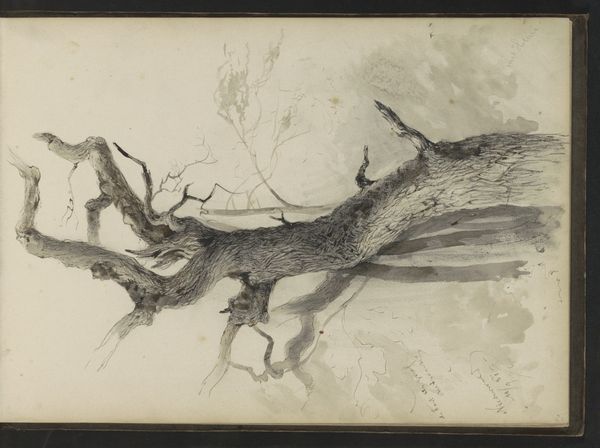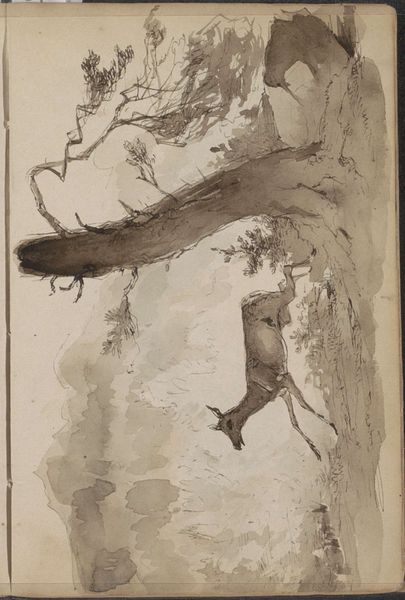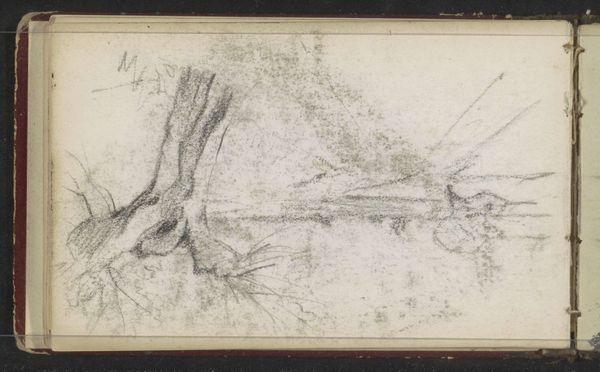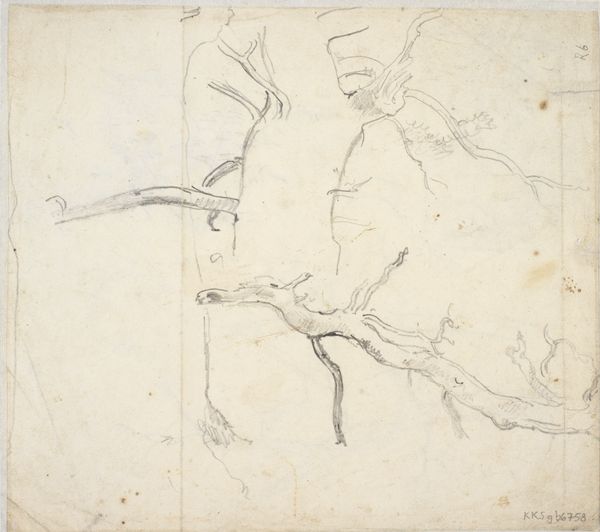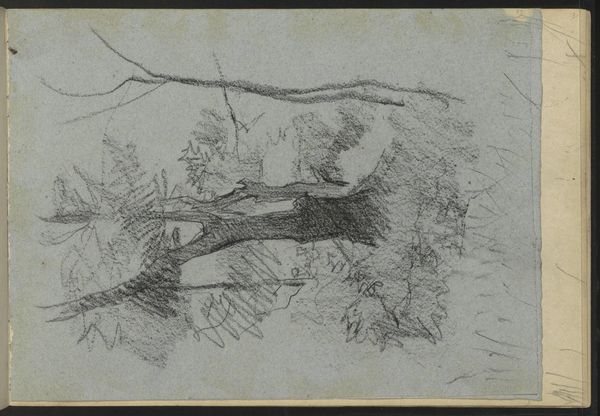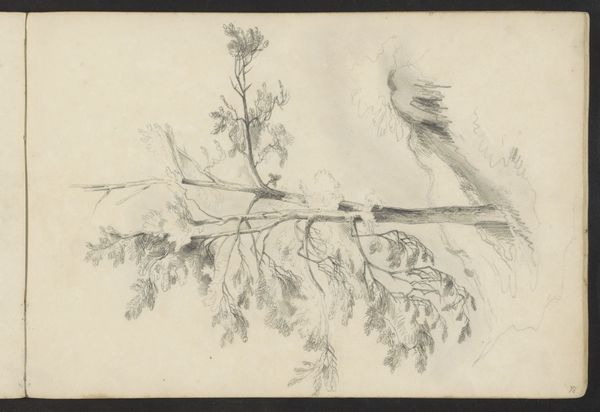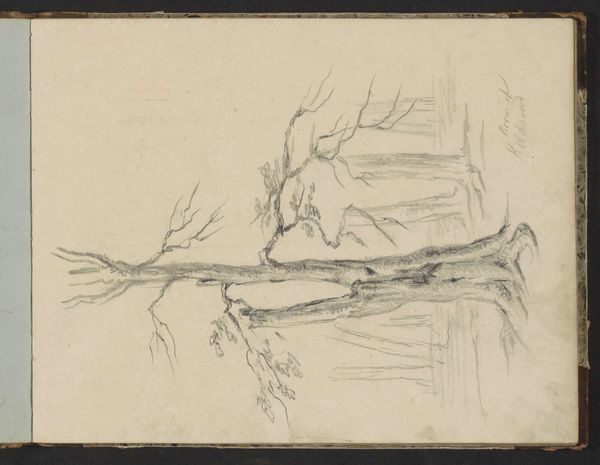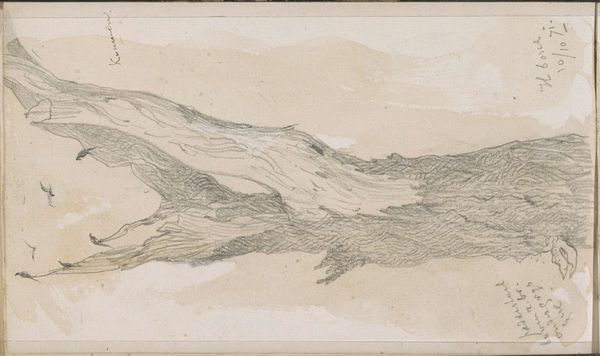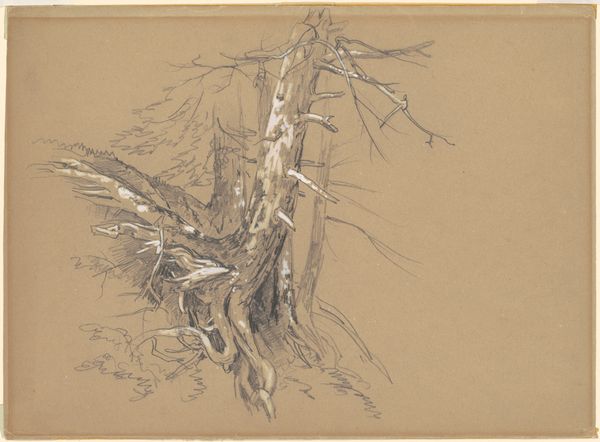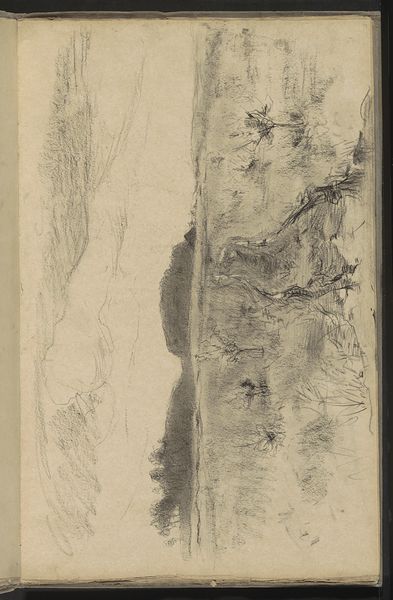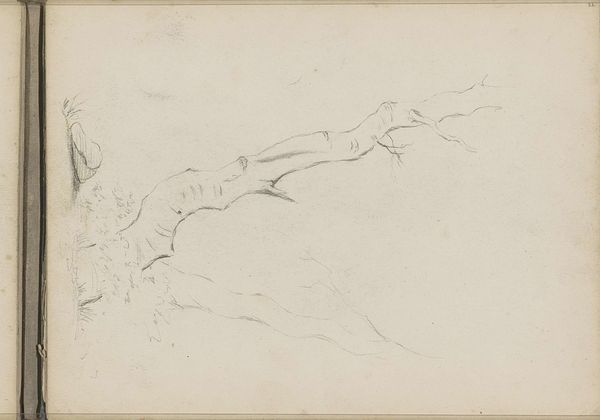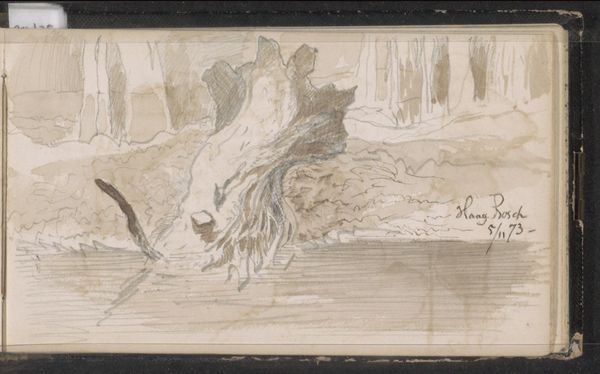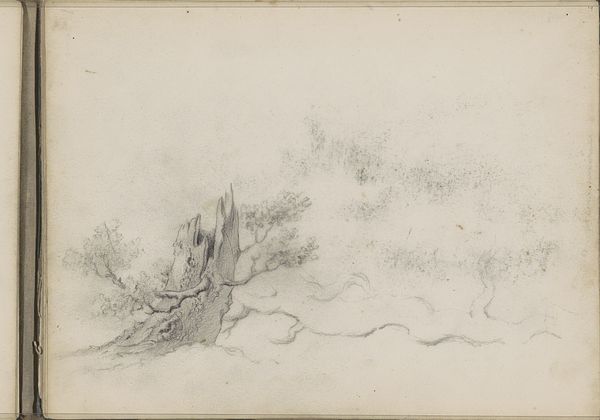
Copyright: Rijks Museum: Open Domain
Curator: It has a ghostly, almost spectral quality. The subject, a fallen branch, seems to float against an ethereal background. Editor: Indeed. What we're seeing is Johannes Tavenraat's "Eikenboom in Niederwald", created between 1861 and 1869. This work at the Rijksmuseum uses watercolor and ink, masterfully rendered to explore a rather romantic vision of nature. Curator: Romantic is definitely the word that comes to mind. It’s as if this branch isn't just a piece of wood, but a symbol—maybe of time, or resilience? The stark contrast evokes themes of decay. Editor: Certainly, Romanticism held a strong fascination with the cycle of life and the sublime found in nature's power, as society started dealing with early industrialization. Tavenraat uses watercolor to evoke texture, with careful strokes implying the rough bark and the delicate decay—it seems charged with feeling and is rooted in history. The way he captures the play of light and shadow accentuates the almost allegorical symbolism. Curator: The stripped-back composition focuses our attention sharply on the form of the branch itself. There's a visual language here. We can almost discern a figure—arms reaching, a twisted torso. The choice to depict a solitary object encourages introspection, don't you think? Editor: Absolutely, especially when presented in this liminal way. It appears divorced from a broader environment which reinforces the theme of isolation so popular in the romantic imagination, during the beginnings of modernity. Curator: I agree. It also seems like the artist is exploring how nature itself carries a narrative, a history etched into its very form. We, as viewers, become interpreters of its story. Editor: Precisely. Considering when Tavenraat was active, it provides interesting commentary about the state of industrial society, in contrast to nature. An artistic and social narrative to this piece. Curator: The ghostly and romantic feel leaves a strong impression of both vulnerability and endurance in natural processes. Editor: Yes, and it prompts contemplation regarding nature as the site of our memories.
Comments
No comments
Be the first to comment and join the conversation on the ultimate creative platform.
